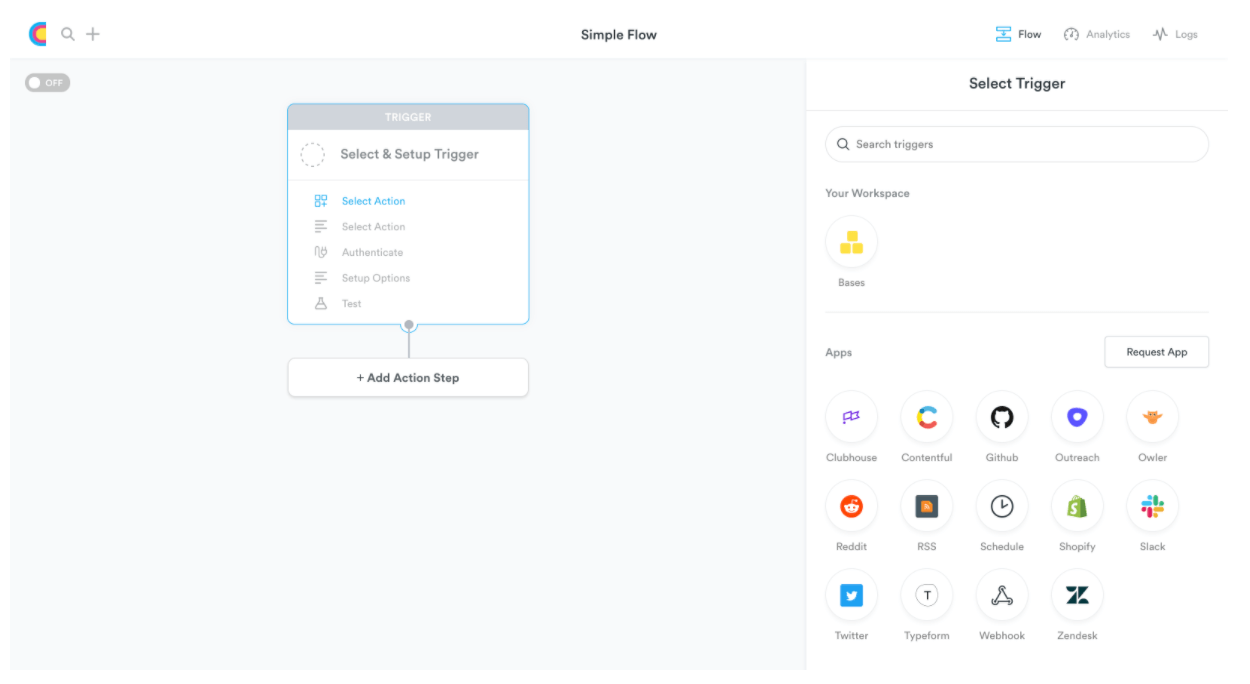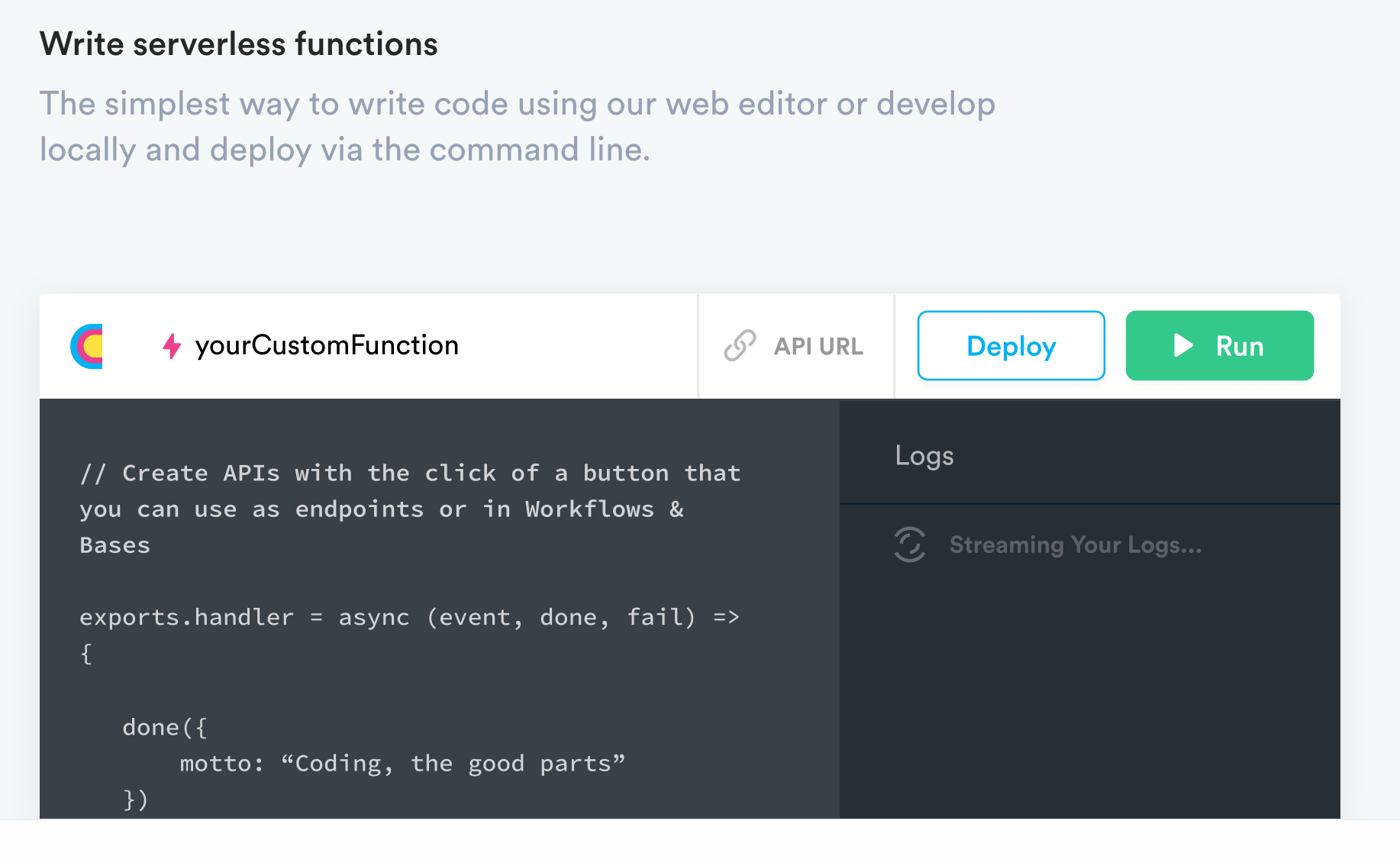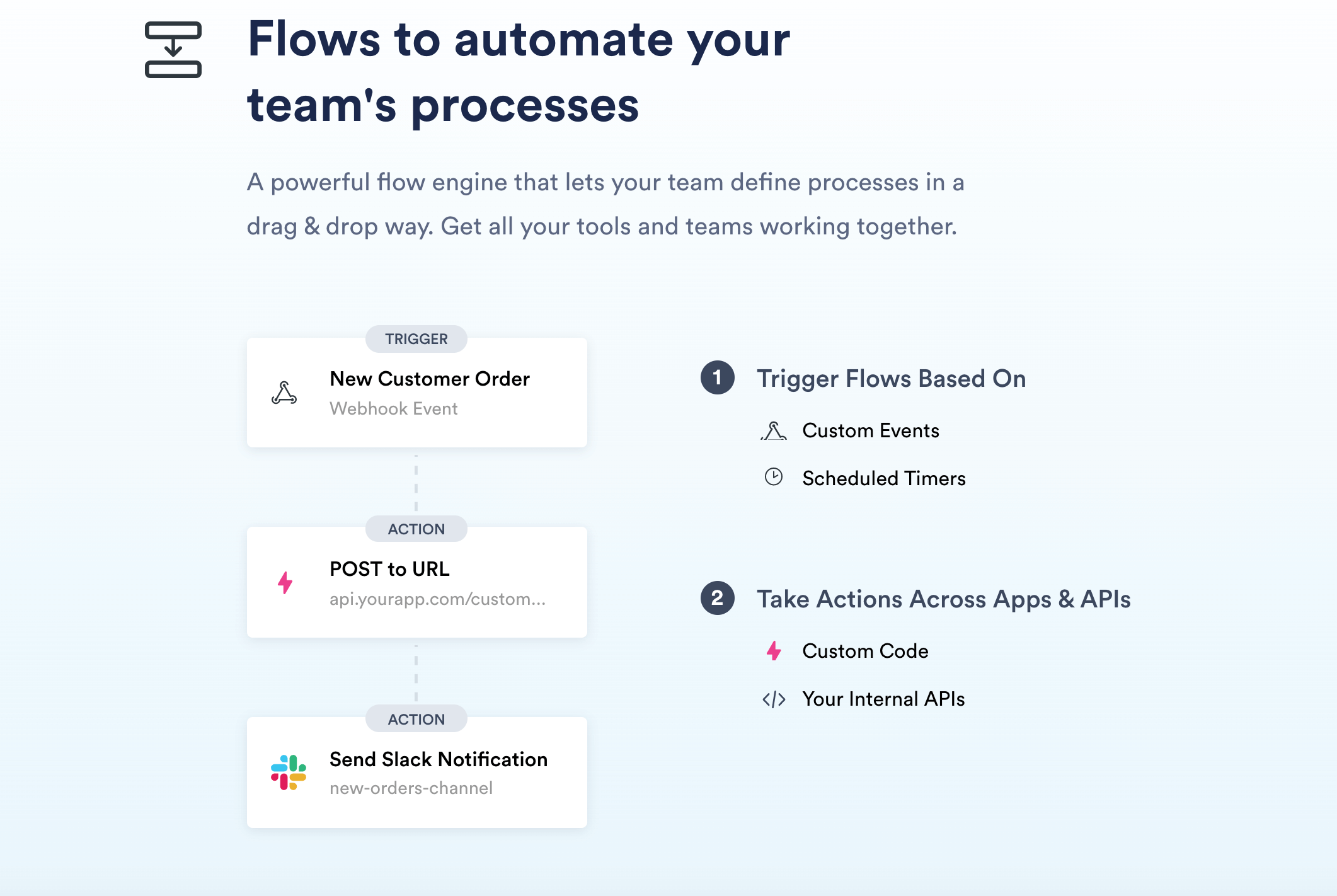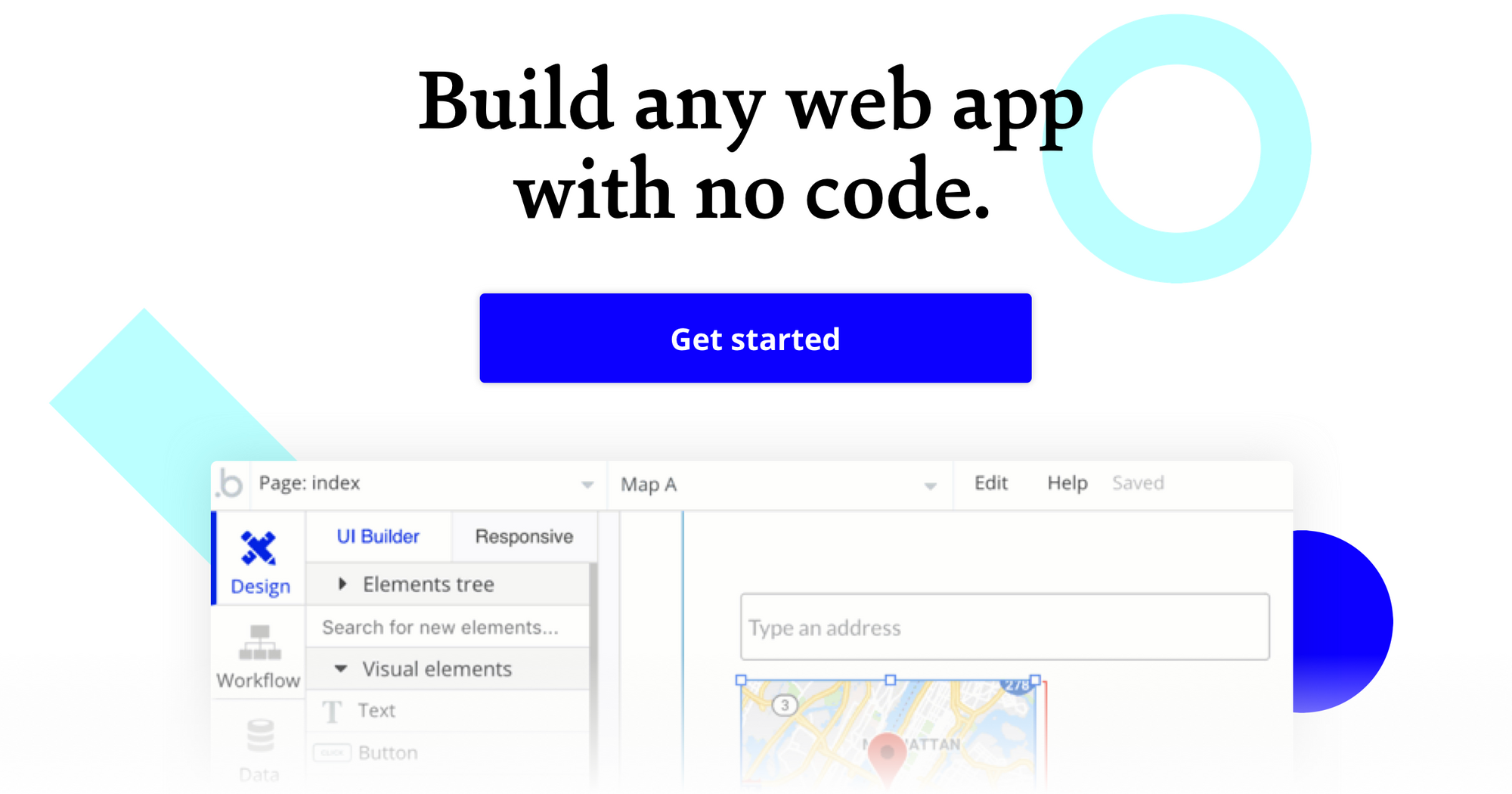At Bubble, we want to enable potential builders to create their ideas without code, so we are exploring and reviewing the many tools and software that developers and non-developer might use to build apps.
What is Clay?
Clay allows you to build tools, create data sets, and augment workflows in order to increase your team’s productivity. By uniting spreadsheets, coding, and simple automation, Clay transforms your apps and code into automated workflows.
Besides having the capability to write custom functions in the middle of your flows, Clay lets your team define processes using drag-and-drop tools. Trigger flows are based on custom events, as well as scheduled timers.
Focused on streamlining business processes, Clay can send automated messages to sales representatives, marketers, engineers, and other stakeholders so that they can accomplish things like follow up on prospective leads, track and manage ad campaigns, and catch bugs as soon as someone hits an error. A new customer order, for instance, can trigger certain actions, like sending a Slack message to the relevant team member.

Clay resembles Zapier and Parabola, but it also comes with a database. The platform provides API connectivity and enables you to combine functions with flows and bases (databases).
To help you build faster, they provide a gallery of connectors, though you are also welcome to build custom functions using code.
Who is Clay for?
Users of Clay include small businesses, startups, and enterprises. The no-code platform focuses on internal use, as opposed to end users.
Clay has pre-built workflows that are designed for people in a number of roles, including sales, marketing, HR, engineering, and customer success.
Clay Cost and Pricing?
(Pricing model evaluation: June 2020)
Clay offers free, paid, and enterprise options.
Free: The Free option includes 10,000 records per base, 2 workflows, 1000 runs, and 1000 function credits.
Pro: The price for the Pro option is $49 per user (per month) and comes with 50,000 records per base, 10 workflows, 5000 runs, and ten times the number of function credits offered by the free option.
Enterprise: To receive a quote for an Enterprise option, you must contact the Clay sales team. This option provides unlimited workflows, a dedicated account manager, and scalable pricing that meets your organization’s specific needs.
Clay vs. Bubble: A Comparison
How does the internal-workflow model of Clay compare to a more comprehensive no-code platform like Bubble?
Similarities between Clay and Bubble:
Both Clay and Bubble offer integration with tools like Slack, GitHub, and Shopify.
Both allow for seamless connections with an API.
Both Clay and Bubble currently have a free plan option.
Both enable you to build workflows using drag-and-drop tools.
Both equip builders with relational database functionality.
Both come with a pre-made sign-up/login workflow for users, including connecting to external services such as Twitter and LinkedIn.
The key differences between Clay and Bubble are:
Internal Workflows vs. End Users: Clay’s workflows are geared towards automating your team’s processes and are focused on internal use. Businesses and startups can also use Bubble to build apps for internal workflows, but Bubble is a good option if you are building apps with end users or customers. Things like building a full marketplace, a comments system for a social network, or an upvoting system are possible in Bubble.
Enterprise vs Entrepreneur: Clay is generally used by enterprise marketers, HR specialists, account managers, sales development representatives, and customer success specialists. Bubble users include developers, small business owners, entrepreneurs, teachers, freelancers, and other members of the no-code community.
Server Functions: Clay authorizes you to write serverless functions, which means that you are able to write code using their web editor, or develop locally via the command line. With Bubble, you can use node modules in a server-side action by pasting in your package.json. When your list of modules has been added or updated, Bubble will then build a deployment package so that the no-code platform can run your action, which can take a few minutes.

Live Debugger: With Bubble, you are able to check your work as you build by using the live debugging feature in the browser. Clay users must debug using more traditional tools and methods, such as browser extensions.
Alternatives to Clay
Alternative no-code CMS platforms or tools that allow you to build a web application without code include the following tools:
If you’re looking for a platform that has support for native or mobile apps, consider using no-code tools like Adalo, Glide, or Thunkable.
If you only need basic landing pages and simple CMS, or would rather use a website template to ensure that your website’s style remains consistent across the board, consider templated website hosts like Carrd, Squarespace, Wix, or Weebly as alternatives.
If you require full freedom over front and back-end elements, or if you need to build a product that is aimed at end users (like a full marketplace or a social network), no-code platforms like Bubble are a good alternative to Clay.
If you want to launch a blog or an e-commerce site and need an open-source CMS platform with robust plugins, check out WordPress.
If you’re looking for a no-code platform with an enterprise focus, Unqork, Retool, and Betty Blocks are good options.
About Bubble
Bubble is a leader in the no-code movement. Bubble offers a powerful point-and-click web editor and cloud hosting platform that allows users to build fully customizable web applications and workflows, ranging from simple prototypes to complex marketplaces, SaaS products, and more. Over 400,000 users are currently building and launching businesses on Bubble - some have gone on to participate in top accelerator programs, such as Y Combinator, and even raised $365M in venture funding. Bubble is more than just a product. We are a strong community of builders and entrepreneurs that are united by the belief that everyone should be able to create technology.
Join the no-code movement today.
Disclaimer: The goal of these reviews is to provide an honest, practical, differentiated comparison of features and educate readers on tools in the no-code ecosystem so that you can evaluate how these services fit together and serve your needs.
Build for as long as you want on the Free plan. Only upgrade when you're ready to launch.
Join Bubble








